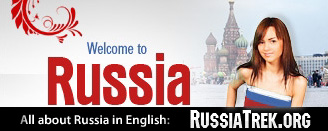mobile View, to the German Version tap the flag
![]()

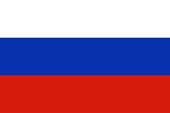


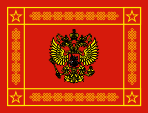


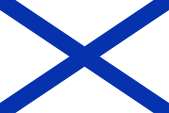



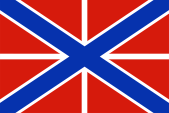

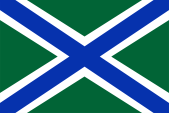

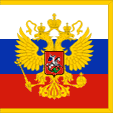


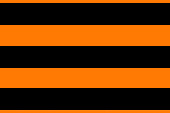




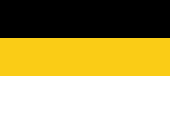



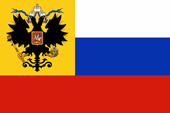

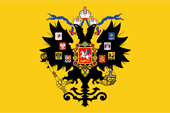



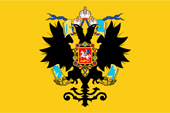

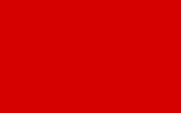


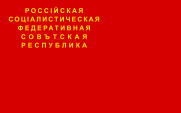


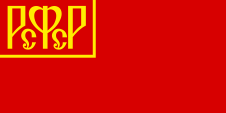

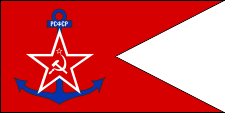


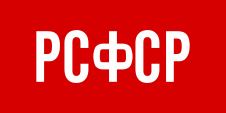

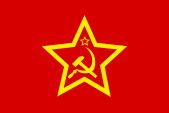

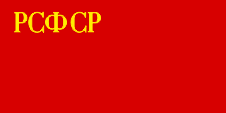

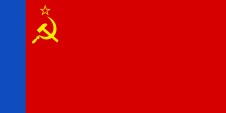



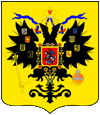
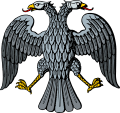
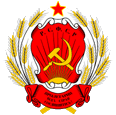
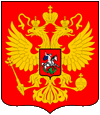


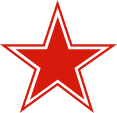
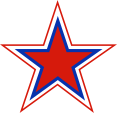
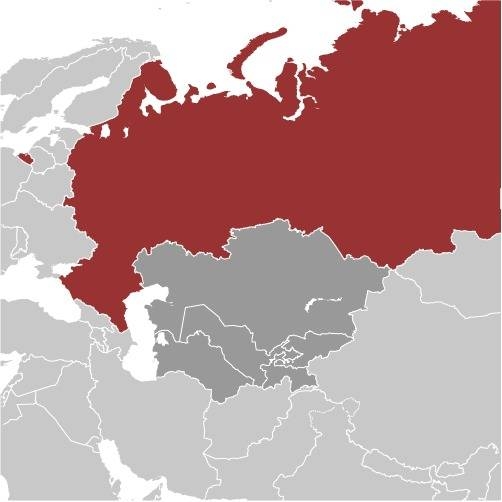
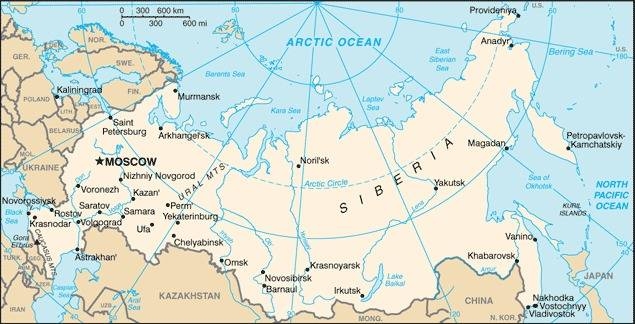
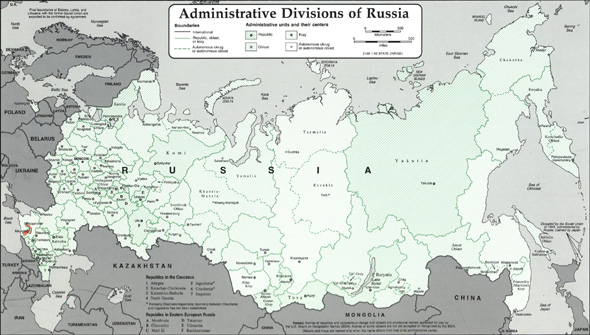
antiquity · tribes of the Eastern Slavs settle – coming from the Northern Carpathian Area – in the region northern the Black Sea
since 800 · Swedish Normans, so named Varegers, invade over the rivers Memel (Neman), Western Dvina, Neva and Volchov into the environment of the Eastern Slavs
862 · the Vareger Rjurik conquers the town of Nowgorod, the local Slavonic tribe of the Slovenes levies Rjurik to the "Prince of Novgorod", that establishes in this way the Rus of Novgorod, a Norman feudal state, and the until 1598 in Russia ruling Rjurik Dynasty
862–880 · the Varegers reach the Dnjepr River and advance to south
ca. 882 · the Varegers Askold and Dir conquer Kiev and establish the Rus of Kiev, a further Norman feudal state, the Vareger Oleg, successor of Rjurik, aims for the unification of Novgorod and Kiev
882 · unification of Kiev and Novgorod, establishment of the Empire of Kiev
911 · Oleg advances along Dnjepr River to the Black Sea and beleaguered successfully Constantinopel – the capital of the Byzantian Empire, making of a trade treaty with Byzantium
962–973 · reign of Svjatoslav in the Empire of Kiev, campaigns against the Slavonic tribes of the Vjatitshes, Wolynians and Drevljans, as well as against Chasars and Volga Bulgarians
988 · Vladimir the Saint introduces the Christianity
1019–1054 · reign of Yaroslav the Wise, the Empire of Kiev evolves its greatest power and dilation, in the north to the White Sea, in the East to the rivers Northern Dvina, Sukhona, Volga, Oka, Don, in the south to the Black Sea, in the west to the Carpathia Mountains and nearly to the Weichsel River, as well as to the today's eastern border of the Baltic states
ca. 1050–1150 · the people of Kumans conquers the south of the Empire of Kiev, loss of accession to the Black Sea, decay of trading, beginning disintegration of the empire
ca. 1150 · the Empire of Kiev disintegrates in several states, the most important: Principality of Vladimir-Wolynia in the west, Rus of Novgorod in the northwest, and Principality of Vladimir-Susdal in the northeast, Galitsh and Kiev in the south, Murom-Rjasan in the east
1237 · arrival of the Mongols, fall of Rjasan
1237–1238 · conquest of Vladimir-Susdal by the Mongols
1240 · conquest of Kiew, Wladimir-Wolynia and Galitsh by the Mongols, Novgorod remains unoccupied but has to make concessions to the Mongols, in the afteryears Novgorod sees a gigantic economical boom as town of trade and town in the Hanse Confederation (Hansetic League)
1242 · legendar (rather improbable) battle on the ice of the Peipus Sea, prevention of expansion of the Teutonic Order to the east Osten by Alexander Newskij – the sovereign of Novgorod
ca. 1300 · evolution of the Principality of Moscow under Mongol supremacy in the south of the former Vladimir-Susdal
1320/1340 · the Mongols elevate the Principality of Moscow to an Grand Principality
ca. 1360 · first battles of the Russians against the Mongols
1380 · first big victory of the Russians over the Mongols on the Snipe Field upon the River Don (Kulikovo Polye)
1425–1462 · reign of the Moscow Grand Prince Wassilij II., unification of the component principalities in the state of Moscow
1478 · conquest of the Principality of Novgorod by the Grand Principality of Moscow (in this way become the Ural Mountains in the north the Russian eastern border), Novgorod has to leave the Hanse Confederation, gradual economic decay
1480 · end of the tributary of Moscow toward the Mongols
1484 · conquest of the Principality of Koselsk by the Grand Principality of Moscow
1485 · conquest of the Principality of Twer by the Grand Principality of Moscow
1494 · conquest of the Principality of Wjasma by the Grand Principality of Moscow
1502 · Russian conquests in Livland (goal: accession of the Baltic Sea) fail in the resistance of the Teutonic Order, expulsion of the last Mongol Grand-Khan of the Golden Horde (Big Horde), in this way beginning Russian Eastern Expansion
1503 · eminent earnings of territory of the Grand Principality of Moscow in Poland-Lithuania
1510 · conquest of the Principality of Pleskau (Pskov) by the Grand Principality of Moscow
1515 · conquest of the Reign of Smolensk by the Grand Principality of Moscow in Poland-Lithuania
1521 · conquest of the Principality of Rjasan by the Grand Principality of Moscow, the Russian Grand Princes adope additional the title "Tsar" (Caesar → Tsar → Kaiser [emperor])
1547 · Grand Prince Ivan IV. (the Terrible) becomes crowned to Tsar, "hour of birth of the Russian empire"
1552 · conquest of the Mongol Khanate of Kasan by Russia
1558–1595 · Livonian War, war because of the division of the Baltic area of the State of the Teutonic Order among Russia, Poland-Lithuania, Sweden and Denmark
1558 · conquest of the Mongol Khanate of Astrakhan by Russia, in this way becomes the Ural River to the eastern Russian border in the south
1561 · end of the State of the Teutonic Order, transformation of Kurland in a Polish fiefdom, ceding of Livonia to Poland, ceding of Estonia to Sweden
1570 · the Russian Grand Prince (since 1547 tsar too) Ivan IV. (the Terrible) destroys Novgorod
1582 · conquest of the Mongol Khanate of Sibir by Russia, in this way becomes the upper part of the Yenissej River (beyond the Ural Mountains) the eastern Russian border in the north
1582 · Tsar Ivan IV. (the Terrible) disclaims his demands in Livonia
1595 · Tsar Ivan IV. (the Terrible) disclaims his demands in Estonia, end of the Livonian War
1598 · death of Tsar Ivan IV. (the Terrible), vanish of the Norman Rjurik dynasty
1598–1613 · "times of confusions (Smuta)"
1613–1645 · reign of Tsar Michael Fjodorovitsh Romanov, consolidation of Russia, expansion of the Russian territories in the east until Kamchatka Peninsula, establishment of the Romanov dynasty (to 1917)
1648 · Bohdan Michajlovitsh Chmielnitski separates the Ukraine from Poland
1654 · Russian-Ukrainian Treaty of Perejaslavl, annexion of the Ukraine by Russia
1654–1667 · Russian-Polish war, Poland has to cede the Ukraine eastern the Dnjepr River to Russia
1689–1725 · reign of Tsar Peter I. (the Great), transformation of Russia in a modern state
1700–1721 · Nordic War, Denmark, Saxony, Poland, Russia, Prussia, Hanover against Sweden, Poland has to cede Livonia, Sweden has to cede Estonia, Ingermanland and parts of Karelia to Russia, Russia becomes an east european leading might
1703 · transfer of the residency of the tsar from Moscow in the new build Sankt Petersburg
1721 · Tsar Peter I. (the Great) names itself "Emperor"
1731 · Russia submits the northern and western outer territories of the Kazakh Area
1774–1783 · earning of Tauria and of the Crimean Peninsula from the Ottoman Empire
1772 · First Polish Division, Russia annexes the north and the east of Belarus (White Russia) from Poland
1793 · Second Polish Division, Russia annexes Belarus (White Russia), Eastern Podlesia, Eastern Wolhynia and Podolia from Poland
1795 · Third Polish Division, Russia annexes Kurland, Lithuania, Western Podlesia and Western Wolhynia from Poland, Russia becomes an european great power
1806–1812 · Russian-Turkish war
1809 · Russia conquers Finland
1812 · Russia-Campaign of Napoléon I. (Emperor of France), marching-in in Moscow, march back under heavy casualties, defeat of France
1812 · Peace of Bucharest after the Russian-Turkish war, the eastern part of the Romanian Principality of Moldova (between the rivers Prut and Dnjestr) comes under the name Bessarabia to Russia
29th of March 1815 · Vienna Congress, reconfiguration of Europe after the era Napoléon, the Grand Duchy of Warsaw becomes dissolved and comes as "Kingdom of Poland" (Congress-Poland) to Russia and becomes effectively a Russian province
1824–1853 · Russia conquers the whole Kazakh Area
1828–1829 · Russian-Turkish war, defeat of Turkey (Ottoman Empire), Russia earns the delta of Danube river
1853–1856 · Crimean War: Turkey, United Kingdom, France and Sardinia against Russia, defeat of Russia, termination of the Russian expansions in the Balkan region
1858 · Treaty of Aihun, Russia aerns the Amur area and Northern Sakhalin Island
1859–1864 · Russia annexes Turkestan (today's Uzbekistan)
1861 · abolition of serfdom
1865 · Russia annexes Tashkent and Kyrgyzstan, formation of the Government General of Turkestan (today's Kazakhstan), in this way annexion by Russia
1868 · Russia annexes Samarkand and the Khanate of Bukhara
1873 · Russia annexes the Khanate of Chiva
1873–1878 · Three Emperor's Agreement between the German Empire, Austria-Hungary and Russia
1875 · Russia interchanges with Japan the Kuril Islands against Southern Sakhalin
1876 · Russia annexes the Khanate of Kokand
1878 · Berlin Congress, contractual termination of the Russian axpansions in the Balkan area
1881–1886 · Three Emperor's Treaty between the German Empire, Austria-Hungary and Russia
1887 · Reinsurance Treaty between the German Empire and Russia
1884 · Russia annexes Merw (Mary)
1890 · the German Empire rejects the renewal of the Reinsurance Treaty, Russia begins to orientate at France
1893–1895 · Russia annexes Tajikistan
1904–1905 · Russian-Japanese war, defeat of Russia, the Russian troops have to leave Manchouria and Russia has to recognize Korea as Japanese area of interests, furthermore Russia has to cede Liaotung Peninsula with Port Arthur Base and Southern Sakhalin Island to Japan
1905–1906 · Russian civil revolution, Russia gets a constitution
1st of August 1914 · Russia sparks quasi the First World War (1914–1918), it declares the war to Austria-Hungary, because of patriotic-nationalistic emotions in the year 1914 the German name of the city Sankt Petersburg becomes changed in Petrograd
November 1914–August 1915 · Russian Congress Poland becomes conquered by German and Austrian-Hungarian troops, the German and Austrian-Hungarian troops can advance to ca. 27° E.L., senseless position war
5th of November 1916 · Poland separates from Russia, proclamation of the Independent Kingdom of Poland
12th of March 1917 · civil "Februar Revolution" in Russia
15th of March 1917 · resignation of Tsar Nikolaus II., end of monarchy, formation of a provisional government of the Republic of Russia under Prince Georgij Jevgenyewitsh Lvov, later under Alexander Fyodorowitsh Kerenskij
March 1917 · the Ukraine separates from Russia and declares its independence (until the 22nd of January 1918, then establishment of the Soviet Power)
7th of November 1917 · bolshevist coup d'état ("October Revolution"), communists under W.I.Lenin seize the Power
6th of December 1917 · Finnland separates from Russia and declares its independence
20th of December 1917 · establishment of the Tsheka (bolshevist secret police), beginning of the red terror
22nd of December 1917 · start of the peace negotiations of Brest-Litovsk between Russia, Austria and the German Empire
18th of January 1918 · the Bolshevists liquidate the free elected parliament of Russia in which they had only 175 of 707 seats
18th of February 1918 · because the Bolshevists retarded the signing of the Peace of Brest-Litovsk, German and Austrian-Hungarian troops occupied large parts of Russia, ca. to the rivers Don, Donez, Sejm, Dnjepr and Velikaya
24th of February 1918 · Estonia separates from Russia and declares its independence
March/April 1918 · debarkation of foreign intervention troops in Murmansk (US-Americans, British, Frenchmen) and Vladivostok (Japanese) to strike down the coup d'état of Lenin
3rd of March 1918 · Russia signes the Peace of Brest-Litovsk
25th of March 1918 · Belarus (White Russia) separates from Russia and declares its independence (to 1919, then establishment of the Soviet Power)
19th of April 1918 · Lithuania separates from Russia and declares its independence
25th of May 1918 · the anti-bolshevist Czechoslovak Volunteer Corps begins the fight against bolshevism near Samara
26th of May 1918 · Georgia separates from Russia and declares its independence as Democratic Republic of Georgia (to 1921, then establishment of the Soviet Power)
8th of June 1918 · formation of a Russian civil counter-government in Samara
10th of July 1918 · appointment of a new constitution, Russia becomes the "Russian Socialistic Federative Soviet Republic (RSFSR, Soviet Russia)"
16th of July 1918 · Tsar Nikolaus II. and his whole family get murderd by Bolshevists
11th of November 1918 · end of the First World War, the German and Austrian troops withdraw from Soviet Russia
18th of November 1918 · Latvia separates from Russia and declares its independence, Alexander Wasilyevitsch Koltshak declares itself in Omsk to Imperial Regent and to the Supreme Commander of the anti-bolshevist troops
1918–1922 · civil war between civil, monarchistic and bolshevist forces under interference by foreign intervention troops, victory of the bolshevist forces, establishment of the Soviet power in whole Russia, this fact will cost the lives of ca 80.000.000 human beings in the direct scope of power of the Soviets until the year 1990
1919–1930 · formation of autonomous socialistic republics of nationalities within Russia (the today's members of the Russian Federation)
7th of February 1920 · Bolschevists murder Alexander Wasilyevitsch Koltshak in Irkutsk
April 1920 · Polish-Soviet Russian war
18th of March 1921 · Peace of Riga after the Polish-Soviet Russian war, Poland annexes large parts of Belarus (White Russia) and of the Ukraine
30th of December 1922 · foundation of the Soviet Union (USSR), combination of the Soviet Republics of Russia (RSFSR), Belarus (White Russia), Ukraine and of the Transcaucasian Federation
31st of January 1924 · new constitution for Russia (in the framework of USSR), in the same year Petrograd becomes renamed in Leningrad
1941–1945 · Second World War, Russia Campaign of the German Empire, Russia had heavyly to suffer under the effects of the war and has to give a high number of victims, Russians fought in high numbers within the Soviet troops against the Germans, but some Russians (ca. 100.000–200.000) hoped for a liberation from the bolshevism and fought within national Russian units (RONA, ROA, RNNA), or within the lines of the German War Might, or within special units by the hands of the German Empire
1991 · the remains of Tsar Nikolaus II. and his family get found in Yekaterinburg
1991 · Leningrad gets back its right name, from now on its name is Sankt Petersburg again
8th of December 1991 · Russia, Ukraine and Belarus (White Russia) declare themselves for sovereign and establish the "Commonwealth of Independent States" (CIS)
21st of December 1991 · joining of all former Soviet Republics of the USSR to the CIS (except Georgia)
31st of December in 1991 · the Soviet Union dissolves, the constitution of the Russian Socialist Federative Soviet Republic (RSFSR, Russia), a former substate of the Soviet Union, remains in force for the time being
12th of December 1993 · first free elections since 1917
25th of December in 1993 · a new constitution for Russia (Russian Federation) comes into force, and the relationships with the members of the federation is re-regulated in this way
1994 · invasion of Russian troops in the Autonomous Republic of Chetchenia, which had declared unilaterally in 1991 its independence
8th of June 2000 · Chetchenia gets subordinated under direct presidial administration
14th of August 2000 (20th of August 2000) · Tsar Nikolaus II. becomes canonized by the Russian-Orthodox Church
16th of March in 2014 · after a coup in the Ukraine: referendum in the Republic of Crimea, an overwhelming majority votes in favor of a connection to Russia, on 18th of March the parliament of Crimea decides the affiliation to Russia, on 20th of March the parliament of Russia decides the affiliation of the Republic of Crimea to the Russian Federation
February 2022 · Russia invades Ukraine and starts a war, virtually as an escalation of the Russian-Ukrainian conflict in the Donbass region that has been simmering since 2014
30th of September in 2022 · annexation of the Republics of Luhansk and Donetsk and the Kherson and Zaporizhzhya Oblasts to the Russian Federation
Source:
Atlas zur Geschichte,
World Statesmen,
Russiatrek,
Die Völker der Erde,
Wikipedia (D)
![]()
